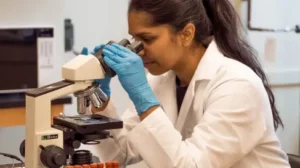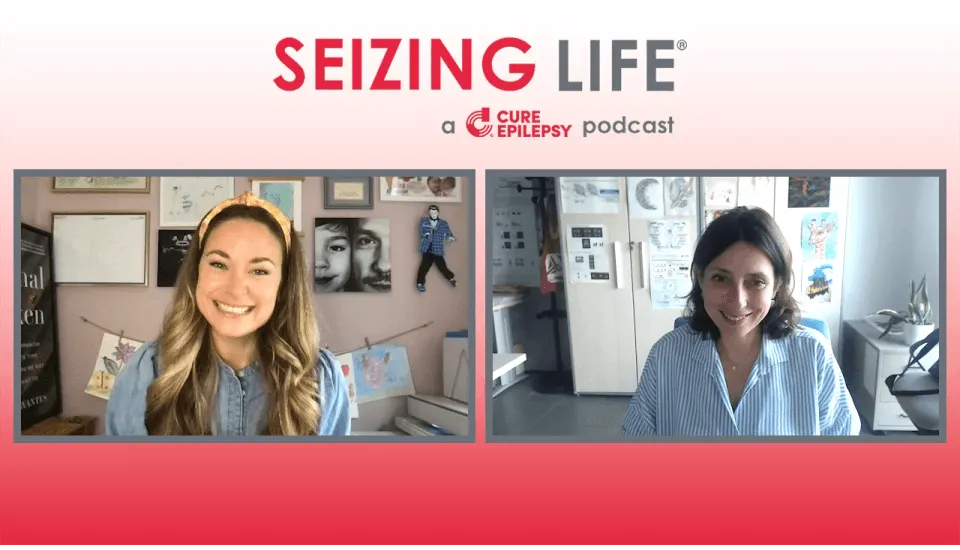Episode Overview
Epilepsy is a global health concern. Tens of millions of people worldwide are impacted by this disease. Those who are touched by it know that the complexities of epilepsy can create a myriad of challenges. Those challenges are often magnified in developing countries where lack of diagnosis and treatment availability are often compounded by fear and stigma.
On this episode, former CURE Board Chair and BAND Foundation trustee Gardiner Lapham speaks with current Board Chair Stacey Pigott about the global impact and complex challenges of epilepsy and tells us how the foundation is helping combat the epilepsy health crisis in the developing world.
For information on the complex challenges to epilepsy care in sub-Saharan Africa, as well as potential interventions aimed at prevention of some common causes of epilepsy in Africa, watch our webinar International Disparities in Epilepsy Care: Social & Economic Effects of Epilepsy in Sub-Saharan Africa.
Episode Transcript
Stacey Pigott: Hi, I’m Stacey Pigott and this is Seizing Life, a weekly podcast produced by Citizens United for Research in Epilepsy, or CURE. Today, I’m delighted to have Gardiner Lapham with us to shed light on the epilepsy health crisis in the developing world and the steps that are being taken to address it. Gardiner is a passionate advocate for epilepsy research, education, and awareness. Her background makes her uniquely qualified to speak with us about this pressing public health issue.
Stacey Pigott: She is a registered nurse with a master’s in international public health, and after losing her four-year-old son, Henry, to Sudden Unexpected Death in Epilepsy, SUDEP, she became actively involved in epilepsy advocacy. She is a longtime friend, supporter, and board member of CURE, serving as our board chair from 2013 to 2015. She currently sits on the International League Against Epilepsy’s Global Outreach task force, as well as the International Bureau for Epilepsy’s Communication task force. Gardiner is a trustee of the Band Foundation that is supporting advocacy efforts in Africa. Thank you, Gardiner, so much for being with us here today.
Gardiner Lapham: Thanks for having me, Stacey. I’ve known you for a long time so it’s an honor to long time.
Stacey Pigott: Mm-hmm (affirmative). Long time.
Gardiner Lapham: I know, it’s awful what pulls us into this issue but we’re both parents in this and you know that I came into this, gosh, almost 12 years ago after I lost my son, Henry. He was four years old, had just been diagnosed with epilepsy and died suddenly unexpectedly in his sleep and I had no idea you could die from a seizure. Soon thereafter that horrible event, I found CURE and its mission really resonated with me. I flew out to Chicago to meet with Susan and to meet with the staff and I got taken with the organization’s work, especially the investment in the SUDEP research space. So I quickly became a member of the CURE family and have been along for the ride and been part of this movement ever since.
Stacey Pigott: Well, and the work that you’ve done with CURE is such an inspiration to all who have followed after you on the CURE board and really has made an impact in patient as well as within the research field. So we’re so grateful that you’re still involved and are starting to take some of your energies into some other areas. Because sadly SUDEP is not the only highly under-researched and highly misunderstood form of epilepsy or issue within epilepsy. So today we wanted you to come and talk to us a little bit about epilepsy in the developing world and some of the public health crisis that’s going on with that. How did you get involved in starting to turn your attentions to African epilepsy and combating the public health crisis in developing countries?
Gardiner Lapham: You’re so right. There’s so many layers to epilepsy that we don’t talk about and we don’t know about and so much of it hides in the shadows. And so for many, many years I was truly only focused on what was going on within our own borders. But my background is in international public health, so I over time started to wonder more and more what goes on with epilepsy in developing countries, and low and middle income countries?
Gardiner Lapham: So I in recent years have learned more and I’ve become increasingly shocked and horrified by how much of a public health burden epilepsy carries. More than 50 million people worldwide have epilepsy, 80% of these people live in low and middle income countries. And of that massive chunk of people, 75% of them receive no epilepsy treatment. I mean, the discrepancies of care and treatment in our world are just tremendous. And yes, I know that is true for so many diseases, but somehow it’s even especially more true for epilepsy and I think for so long I thought of epilepsy as this very complicated brain disease, which it is, right, but what is astonishing to me is 70% of people with epilepsy can be treated with medicines that we have had around for a really long time and that are very affordable. And those medicines aren’t getting to people in need.
Stacey Pigott: How do you begin to even tackle this issue? These statistics are daunting and we completely take for granted we already feel the effects of stigma, we already feel the effects of difficult times for many people with access to health care, but in a developing country, some of those stats that you’re giving us are just alarming. Where do you begin?
Gardiner Lapham: It is alarming and there are already efforts underway which are very exciting, but I’m so happy that CURE is shedding a light on this issue because I think it has to begin with awareness and understanding how this issue plays out in different parts of the world and that we all have a reason to be concerned by this and can help with this.
Gardiner Lapham: So I shared some of the numbers around the so-called treatment gap internationally, but what’s another element that’s very interesting is what drives the treatment gap. There is a deep stigma associated with epilepsy, as we all know. It is that much more so in places like Africa, which is what I know more of. The people with epilepsy are discriminated against and often there are violations of human rights. I was just in Uganda at a an African epilepsy meeting and there were advocates there and doctors there and nurses there. It was this great coming together of people who are trying to make a difference on this issue.
Gardiner Lapham: But I heard story after story of what it can be like to live with epilepsy in some of these countries. And kids who have epilepsy who don’t go to school because it’s shameful for their family to be associated with this child. The kids who are chained up because they might have a seizure out in the street. People often live in isolation because it is so embarrassing. It’s often thought to be a curse or witchcraft. There’s a lot of misunderstanding around epilepsy and then that keeps people from seeking treatment even if treatment was there.
Gardiner Lapham: So there are all sorts of barriers to care. One is this lack of understanding, the other is the availability of drugs and the availability of trained providers. So it is a big problem to tackle, but there’s great momentum around it right now, and leading international organizations are really raising awareness on this issue in ways that they never have done in the past. That’s why I’m sitting with my report. This is the epilepsy, a public health imperative. This was just released this summer by the WHO in collaboration with International League Against Epilepsy and the International Bureau for Epilepsy, and this is a document that really puts epilepsy out there as a public health priority and makes the case for why this issue needs to be taken more seriously and invested in and how it can be integrated into existing healthcare systems. So this report will hopefully go a long way in enabling governments to develop plans of care to tackle this problem within countries.
Brandon: Hi, this is Brandon from Citizens United for Research in Epilepsy, or CURE. Since 1998, CURE has raised more than $70 million to help fund more than 235 research grants in 15 countries around the world. Learn more at www.cureepilepsy.org. Now back to this episode of Seizing Life.
Stacey Pigott: Are there any previous models of success? Are there any developing countries that have started to address this in a really meaningful and impactful way? Or are we starting at the very beginning with a lot of these countries?
Gardiner Lapham: I mean it’s different all over the world. I would say Africa, they are more at the beginning, yet there are all kinds of efforts going on. I’m most interested in seeing how epilepsy is integrated in the primary care system where most people go to get treatment, because in countries like Uganda, there are just not that many epilepsy doctors let alone neurologists. But they’ve shown that epilepsy can be diagnosed and treated, many epilepsies can, at the primary care level. So there are efforts being made to try to integrate that training into the primary care level to try to work with the traditional healers, which is who a lot of people go to when they have a seizure, to try to work with the traditional healers to collaborate around what they might want to treat and then what the healthcare system can treat.
Gardiner Lapham: I think maybe what gives me most hope, and I think this might resonate with you too, is the power of advocacy. The advocates that I met in Africa, they’re amazing, against all odds, people who finally get some treatment and are able to come out with a condition that’s so stigmatized and talk about it and start organizations with very little resources. There are lots of these people. There’s a large constituency out there of folks who want really want to move this issue ahead. So I think there’s opportunity and so it’s great to see the WHO level, this issue being made a priority and then at the grass roots is coming alive.
Stacey Pigott: You’re so right about that.
Gardiner Lapham: There’s so much work that needs to be done.
Stacey Pigott: Get that… engage with that grass roots community. Have you been able to find a group of, you know, angry moms that are passionate about trying to find a better way?
Gardiner Lapham: Exactly.
Stacey Pigott: I remember at times reading about different research that’s been done, especially with things like malaria, malaria-induced epilepsy, things like that. Are there unique health challenges within Africa that are just… make it…. we’re dealing with something other than some of the epilepsies that we currently see here in the US.
Gardiner Lapham: Yes, it’s interesting in that way, the burden of epilepsy is much greater actually in some of these African countries than it is even here, and that is because the causes of epilepsy are a little different over there. They have more cerebral infections like malaria. AIDS can cause cerebral infections. There are certain tapeworms. Also trauma. We talk at CURE a lot about head trauma and you all are investing a lot in it. Head trauma is a common cause of epilepsy. Road traffic accidents are a huge problem. But reproductive health care is also a real challenge and so births that maybe don’t go so well and the infant ends up with a head injury that can lead to epilepsy. Stroke is also a very common cause of epilepsy too.
Gardiner Lapham: So there are more epilepsies more prevalent and the mortality and the morbidity of untreated epilepsy is also much greater. So in many ways, it’s an even more urgent problem. And what’s interesting too, on the international scene, they talk a lot about preventable epilepsies. We don’t talk about it as much here in the same way, but they say in low and middle income countries, 25% of epilepsies could be prevented from some of the causes we just talked about. So it is truly a public health problem and I think for so long we haven’t thought of it as a public health problem.
Stacey Pigott: Right.
Gardiner Lapham: But it is.
Stacey Pigott: Yeah. What can an organization like CURE do to help support these efforts?
Gardiner Lapham: Well, I mean this is great. I think bringing awareness to this, because we don’t talk about it so much in these terms, and thinking about these issues and how they play out overseas and how we can be advocates for them here, and talking about them with other organizations and others who could be the private sector that might be able to intersect on this.
Gardiner Lapham: There’s lots of opportunities to engage on this, and I think we’re here just sort of figuring out how to do this. I think the US government has a real opportunity to be a leader on this within the WHO and working to champion that more resources go towards creating an action plan for epilepsy is sort of what the next big push is at the WHO level.
Stacey Pigott: Are you able to share what the BAND Foundation is currently funding or looking at funding at this point?
Gardiner Lapham: Sure. We’re funding a pilot project in six African countries right now.
Stacey Pigott: Wow. That’s awesome.
Gardiner Lapham: It’s really awesome. It’s an advocacy project and it is equipping epilepsy associations in these countries with the tools and resources they need to build networks and collaborations with their own countries to work with, lobby their own ministries of health to make epilepsy a national priority. And this advocacy effort comes on the heels of another WHO sort of landmark resolution that was passed three years ago, which is a really big deal. There had never been a resolution on epilepsy at the WHO level, but this came out and said, “This is a problem. We need to wake up, and member countries of WHO, you need to make epilepsy a priority and create national plans.”
Gardiner Lapham: And in the three plus years that have happened since that resolution, not a lot has happened in many of these countries. So these advocates are now organizing and holding their governments accountable and saying, “We also want to partner with you and develop these plans together so that we can treat this disease.”
Stacey Pigott: What are some short term and long term goals that you feel the BAND Foundation could have in Africa around epilepsy?
Gardiner Lapham: The BAND Foundation is sort of small in the scale of foundations that can really make a dent.
Stacey Pigott: But doing big things.
Gardiner Lapham: But I would love to attract other partners into this space, because I think together short term impact is to jump on this momentum that’s been created by WHO, ILAE, IBE, and make sure that every country’s ministry of health, our HHS, they all know the impact of epilepsy globally and to work with the WHO to ensure that this global action plan is developed next year. That’s a short term advocacy goal.
Gardiner Lapham: I think longer term we need to figure out how to integrate epilepsy into existing healthcare systems so that they are… that epilepsy becomes part of everyone else’s agenda. Epilepsy is a chronic disease, NCDs are now getting a lot of play, non-communicable chronic diseases. And so epilepsy needs to be part of that agenda. So when we’re thinking about like heart disease and diabetes globally and how do we get resources towards those and build those healthcare systems to be able to tackle it, we need to include epilepsy.
Gardiner Lapham: Epilepsy is still thought of in many places in low income countries as a mental health problem, as someone’s insane. It’s not thought of as a treatable, curable health problem. And then we need to keep up with this awareness and I think supporting these advocates from these countries so that they can have a voice to take this issue further in their own countries. I think it’s a lot of work, but I think there’s a lot of opportunity and you can have an outsized impact with relatively smaller investments. I really do.
Stacey Pigott: Yeah. Thank you so much for being with us today.
Gardiner Lapham: Oh, thank you for doing this.
Stacey Pigott: And the amazing this work you are doing. It is just so admirable and we could not support you more in all these endeavors.
Gardiner Lapham: CURE is an amazing organization and it’s home to me.
Stacey Pigott: It is.
Gardiner Lapham: So it’s really great to be back and in your kitchen.
Stacey Pigott: Thank you.
Gardiner Lapham: Thank you.
Stacey Pigott: Thank you, Gardiner, for providing these valuable insights on the challenges of epilepsy in the developing world. Epilepsy impacts tens of millions of people worldwide. It’s essential that we have better access to treatments and to continue research to find a cure to end epilepsy. To help further CURE’s research, both in the United States and around the world, please visit www.cureepilepsy.org/donate. Your support and generosity are greatly appreciated. Thank you.
Brandon: The opinions expressed in this podcast do not necessarily reflect the views of CURE. The information contained herein is provided for general information only and does not offer medical advice or recommendations. Individuals should not rely on this information as a substitute for consultations with qualified healthcare professionals who are familiar with individual medical conditions and needs. CURE strongly recommends that care and treatment decisions related to epilepsy and any other medical condition be made in consultation with a patient’s physician or other qualified healthcare professionals who are familiar with the individual’s specific health situation.





